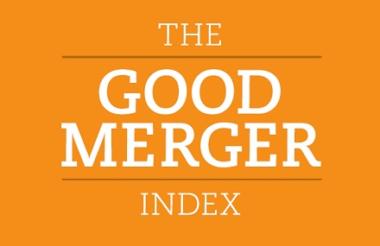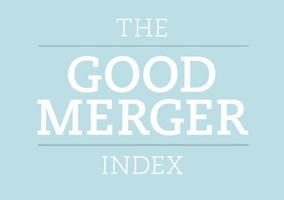Financial difficulties are a major driver of mergers within the charity sector, according to the sixth annual Good Merger Index 2018-19.
The annual report, which is published by consultancy firm Eastside Primetimers, found that 69 per cent of charities making an acquisition have a financial surplus. However, 52 per cent of those being acquired or merged are in deficit.
“There is still significant activity within the sector that sees mergers as reactive mergers before financial crisis and insolvency,” the report states.
Speaking at an event to launch the report, Vicky Browning, chief executive of ACEVO, said that there needs to be a “shift away from just desperation to aspiration”, so that charities consider mergers as part of their strategy instead of only when they hit financial problems.
In order for this to happen, the sector needs to “address the fear issue” that the qualitative evidence in the report points to as a barrier, she added. Browning said that the possibility of mergers should be regularly discussed by management as part of its strategy. “We need to lift the taboo of discussing mergers,” she said.
Sue Farrington, chief executive of SRUK, said if there was an open discussion on the topic, then “what would come shining through is that there are potentially huge benefits for our beneficiaries, and at the end of the day that is why we are here.”
‘Lower end of the normal range’
The report, which covers activity in the 12 months from 1 May 2018 to 30 April 2019, found there were 58 mergers involving 116 organisations. This is in the “lower end of the ‘normal’ range of around 55-75 mergers” that the report has tracked over the six years it has been produced.
This represents a drop from the 81 mergers that took place in 2017-2018 and 70 mergers in 2016/17. However, Dave Garratt, director of mergers and governance at Eastside Primetimers, pointed out that these years also experienced consolidation in a number of federated charities.
This still represents low percentage of the overall sector. Frances Runacres, executive director, enterprise and innovation at Arts Council England, said that one reason for this could be concerns over costs as “successful mergers require an investment.”
Income
Takeovers are, as in previous years, the most common form of consolidation. In 2018-19, 63 per cent of deals were takeovers, compared to 69 per cent in the previous year. Mergers were 18 per cent of total deals, compared with 21 per cent the previous year. The remainder of the deals were made up of asset/service swaps, subsidiary deals and group structure.
In terms of the size of charities involved, 54 per cent of mergers involved charities with income of under £1m, 23 per cent with £1m-5m, 10 percent with £5m-10m and 14 per cent with over £10m. Garratt said that this “broadly reflects the voluntary sector ‘pyramid’, meaning that charities are as likely (or unlikely) to be involved in merger activity, regardless of their size.”
The total income of the 116 organisations involved in mergers was £374m. The top 20 largest deals accounted for 94 per cent of this income. The single largest deal was the merger of Breast Cancer Now and Breast Cancer Care which involved combined income of £46.7m.
|
Related articles










